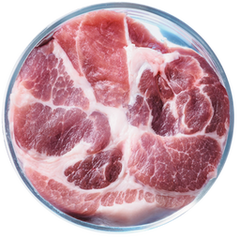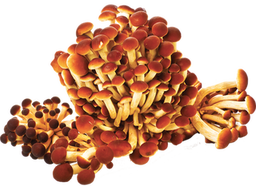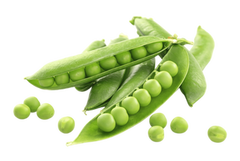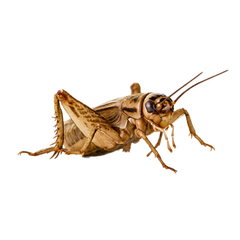Panel discussion on...
Alternative proteins
From plant proteins to single cell biomass
Expansion of alternative protein sources
Sources of alternative proteins can be split into four main categories: plant-based proteins, microbial / single-cell proteins, proteins produced by precision fermentation, and insects. The different categories are at very different stages of development with plant proteins being the most familiar and developed. Even for the established crops, new and improved versions of protein ingredients keep on entering the market. Looking ahead, numerous other crops are attracting interest as possible future protein sources, include various pulses, nuts, green-leafed plants and vegetables, and oil seeds, such as flax.
The main breakthrough in alternative proteins is single cell proteins, which are described as the biomass of microorganisms such as microalgae, filamentous fungi, bacteria, and yeasts. As such, they don’t require land or irrigation, potentially helping to ease pressure on agriculture systems and the environment. The biomass can be used as such or the cells can be further processed to produce functional (protein) fractions such as soluble protein isolates.
Sustainability and processing costs
Alternative proteins are seen as a more sustainable alternative to animal proteins, but their own environmental impact is coming under increasing scrutiny with consumers starting to compare the impact of different alternative proteins. The environmental impact of many alternative protein sources has been quantified, but in comparing these data it is important to explicitly list the boundaries and assumptions used to calculate the environmental impact. For example, many existing plant-based proteins are by-products from another manufacturing process, which may affect the calculated environmental impact. Selecting the most promising plant protein source can be based on the crop’s protein yield per hectare. Or to include measures for land, water and fertiliser use. For example, faba bean scores highly on these parameters, as do leguminous crops in general. In addition, protein ingredients from leguminous crops are typically processed using one of two different processes: wet or dry fractionation, which has a strong impact on sustainability and costs.
Between the wet and dry fractionation methods, the wet processing route is the traditional one, obtaining the purest protein ingredients with a typical protein content above 75%. Wet fractionation involves water or alkaline extraction of the proteins followed by iso-electric precipitation to produce protein isolates. This process requires large volumes of water and subsequently a high energy use to dry the protein isolate. Dry fractionation is an alternative process with a lower environmental impact and lower energy use. The dry process does not involve the use of water and subsequent drying, as the crop is milled to a very fine meal followed by air classification to obtain a protein-enriched and a protein-depleted fraction. Although dry fractionation requires less water and energy, the obtained protein ingredient is different from the one obtained by wet fractionation as the dry-fractionated concentrates have a lower protein purity (typically 50 to 65%). The latest development in cost and energy reduction in the wet process is the development of alternative concentration methods that allows spray drying at a higher dry matter content.
Reducing plant protein off flavours
Many plant proteins are perceived as having “off” flavours that are often described as beany, grassy or oxidised. These off flavours are caused to a large extent by volatile organic compounds in the plant protein ingredients. Plant proteins from different origin contained similar volatile compounds but in very different concentrations. Aldehydes, ketones and furans play a major role in the off flavour of plant proteins. A number of techniques are available to reduce or eliminate off flavours from a product’s perceived flavour. Fermentation is a powerful technique that can be used to degrade the undesirable compounds. Fermentation can be applied in the production process of the alternative proteins or in de the production consumers goods, such alternative for yoghurt and cheese.
Precision fermentation: animal free animal proteins
Precision fermentation is currently the least developed area of alternative protein sources. It involves genetically modifying microorganisms to produce a protein that has an identical amino acid sequence as a target animal protein. This technique is well known from the pharmaceutical industry but applying it to the production of bulk ingredients for food has its challenges. The first is the cost-effective production and second is the technical functionality. For example, dairy products such as yoghurt and cheese are based on casein micelles. Bovine casein micelles consist of a precise ratio of four different caseins that have gone through post-translational modifications, such as phosphorylation which are challenging to express in microorganisms. Creating dairy-based products with caseins produced by precision fermentation will therefore be a challenge. Scale-up risks like these can be greatly reduced through approaches for micro-scale food application experiments, such as yoghurt or cheese preparations. These micro models are well suited for testing small amounts of proteins and can provide critical insight into technological functionalities, such as taste and texture, and allow informed decision making early in the development process.
Consumer acceptance and market growth
Key drivers for consumers to buy products containing alternative proteins are their concerns for the environment and health. Transparency on both topics is important to address the remaining consumer concerns. This includes transparency in the sustainability of alternative proteins compared to animal proteins as well as differences in sustainability between different sources of alternative proteins. Together with data on the nutritional quality of the protein, this will allow consumers to consider both the sustainability and nutritional profile. This complete picture of vegan products is required to overcome remaining or potential consumer concerns.
The growth of the market of alternative proteins requires an improvement in quality of ingredients and products. Developing alternative proteins with excellent taste and smell combined with technical functionality will expand the market. This can be supported with regulation with respect to safety aspects and regulation for a uniform and understandable communication with respect to environmental impact and health aspects. Balanced and understandable information of these aspects on product packaging will allow consumers to make their choice between animal-based protein products and vegan products, and between vegan products based on different alternative protein sources.
Panelists
References and notes
- United Nations Environment Program (2020). Healthy Food for All: How do We Make Healthy Diets Accessible and Affordable for All? A Framework for Action - Perspectives Issue No. 39.
- Lamb, A., Green, R., et.al. (2016). The potential for land sparing to offset greenhouse gas emissions from agriculture. Nature Climate Change, 6(5), pp.488-492.
- Witte, B. et al. (2021). Food for Thought: The Protein Transformation. BCG - Blue horizon.
- European Parliamentary Research Service (2022). What if microbial protein could help reverse climate change?
- Martin, C. (2022). Alternative Proteins: Sustainability and regulatory aspects. Agro FOOD Industry Hi- Tech. Vol 33 (2).



















